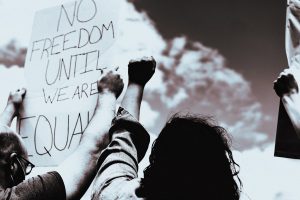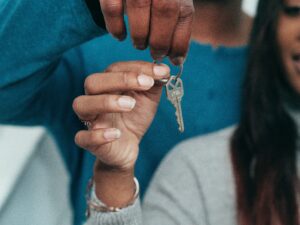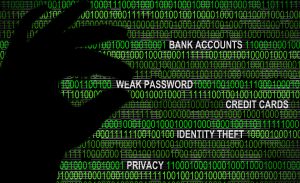With Economic Equality, We All Benefit

FICO 10 and FICO 10T Explained by a Credit Expert
11/04/2021
The Ultimatum on Poor Credit Scores—Essential Pivots for Poor Credit Scores
02/10/2022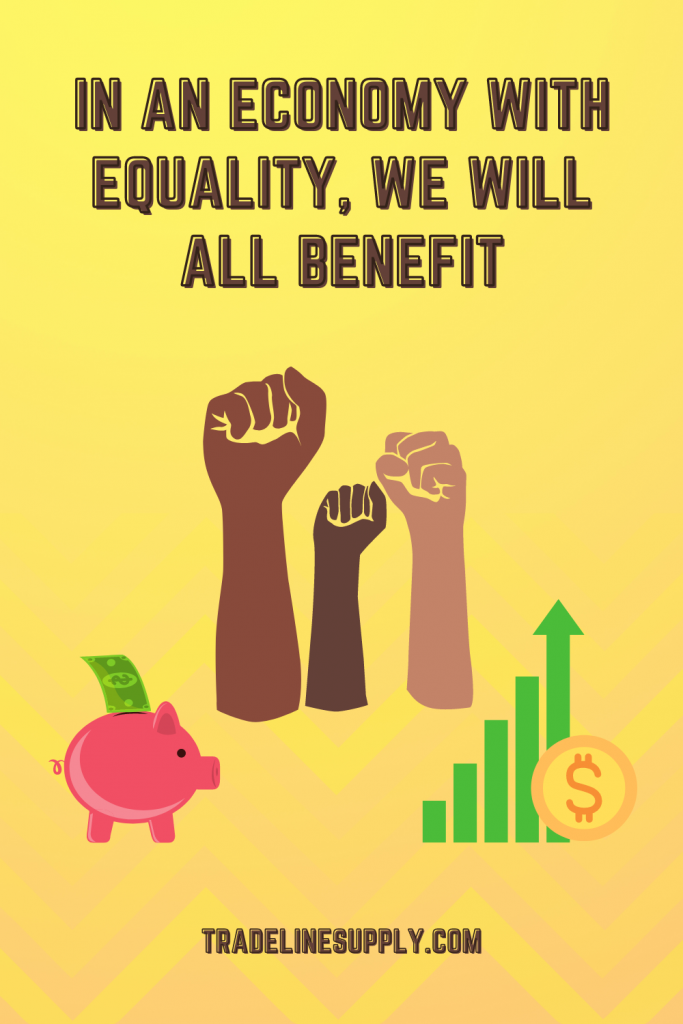 Since the beginning of the pandemic, nearly two years ago, the number of billionaires in the United States has increased from 615 people to 745 people. And their net worth? It’s increased 70 percent. As a collective, they own $5 trillion in assets, which is $2 trillion more than the $3 trillion held by the lower 50 percent of Americans on the income scale.
Since the beginning of the pandemic, nearly two years ago, the number of billionaires in the United States has increased from 615 people to 745 people. And their net worth? It’s increased 70 percent. As a collective, they own $5 trillion in assets, which is $2 trillion more than the $3 trillion held by the lower 50 percent of Americans on the income scale.
But the pandemic isn’t the only place that’s seen the wealth divide between the rich and the poor widen. Over the past 40 years, America has seen an increase in the wealth of the upper class while the middle and lower classes are finding it harder and harder to survive with inflation and the stagnation of wages.
If we worked to eradicate economic inequality, the world would be a happier, more productive place. More people in poverty could enter the workforce and contribute to the economy, and we would see a growth in local as well as global economies.
What Is Economic Inequality?
On a global scale, economic inequality is the unequal wealth and opportunity between the richest groups of people and the poorest groups of people. Almost every country struggles with economic inequality to a degree, and researchers are consistently studying poverty and the effects of poverty on the national and global economy. And economic inequality continues to widen.
Things like education can help people climb the socioeconomic ladder and lessen economic inequality, but it’s getting harder and harder to climb out of the social circle someone was born into. According to IZA World of Labor, there’s a negative association between income inequality and intergenerational mobility. From a policy perspective, this is worrying because families wind up stuck in generational poverty while the rich only accumulate more wealth. Thus, there is not equal opportunity for success in societies with great economic inequalities. And this strains economies.
Is There Economic Inequality in the United States?
Unfortunately, America is not without economic inequality. The Pew Research Center conducted a study looking at income changes in the United States from 1970 to 2018 and noticed some pretty startling trends.
First, the middle class is shrinking. In 1970, about 61 percent of Americans were middle class, and now only 51 percent of Americans fall into this category. And this shift has happened steadily over the last five decades, with each decade ending with more and more people drifting out of the middle class.
But where are the people going? The upper-income tier of Americans increased from 14 percent to 20 percent, but unfortunately, the lower-income tier also increased, from 25 percent to 29 percent.
The gap in the classes is alarming because the poorer classes absorb more economic uncertainty than the wealthier classes. As more people exit the middle class, the economy grows more unstable. Especially since the wealth gap between the richest 5 percent of families and the poorest of American families has doubled since 1989.
Not only is the wealth gap increasing between the richest and the poorest, but American attitudes are shifting about economic inequality as well. Across all income groups, more than half of Americans say that there is too much inequality in the nation (61 percent). And 4 in 10 Americans believe that reducing inequality should be the government’s top priority.
Lack of Credit Is Economic Inequality
Another marker of economic equality is access to credit, which is divided among the classes and races in America. In particular, low-income African-American and Hispanic consumers are hit hardest by lack of access to credit. Over half of African Americans are living paycheck to paycheck and report having no access to credit. And 41 percent of Hispanics have no access to credit.
In contrast, over a third of Americans are added as authorized users to their loved one’s credit cards as a way to jumpstart wealth building.
Credit is crucial to building wealth and climbing out of lower socioeconomic strata. Credit allows you to secure loans so you can leverage debt to increase your quality of life. Common necessities like cars and homes are often purchased using credit, and your credit score affects the interest rates you’re offered as a borrower and your chances of getting approved in the first place. Higher interest rates cut into your ability to save money and break the poverty cycle.
Unfortunately, 30 percent of African Americans and 27 percent of Hispanics claim that they were misinformed or tricked during their first attempts at building credit, and the two communities have a distrust of banks because of shady business practices trying to take advantage of their socioeconomic status. The government established the Equal Credit Opportunity Rights as a way to prevent such predatory practices, and to deter racism from affecting access to credit, but the problem is still systemic in America.
How Much Bigger the Economy Could Be With Economic Equality
If we worked to grant access to more of the American population to credit, and access to opportunities like education to boost their socioeconomic status, the economy we would create would be a stronger, more innovative nation. According to American psychologist Abraham Maslow, when people’s basic needs are met, they’re able to think and dream and discover self-actualization beyond just survival. More people would start businesses, find passions, and give back to the economy through the exchange of goods and services. America as we know it today would look completely different.

Credit invisibles are shut out of financial opportunities and access to credit due to their lack of credit scores.
Currently, there are 6 percent of Americans, or about 14.2 million people, who are unbanked, and another 26 million, or 11 percent, who are credit invisible. Assuming some overlap, that’s anywhere from 11 percent to 17 percent of the American population. Such a large section of the American population is at a disadvantage because they cannot engage in the American economy to the same extent as those who are more financially privileged.
For the unbanked population, oftentimes transit issues keep them from access to a bank since those are often physically located in “better” areas of town. They may work per diem jobs and carry cash, instead of getting their paychecks directly deposited into a bank account. This contributes to systematic inequality because they are less likely to be able to invest this income into the market.
The rise of electronic banks helps with the issue of banking access since these types of banks aren’t tied to a geocentric location. However, if a low-wage worker is being paid in cash, there isn’t always a good way to deposit that money into a bank account.
The credit invisible population is also inhibited from participating fully in the American economy. Credit invisible persons have a harder time securing emergency funding, will have to pay higher deposits for utilities and rent, and will be unable to have a credit score, which is used quite frequently in America as a representation of your creditworthiness and financial dependability.
For these reasons, increasing access to banking institutions and credit-building programs at a systemic level will change the infrastructure of the American economy.
The Dire Risks of Economic Inequality
Economic inequality has incredible risks, both on a personal level and on a societal level, for those living within the capitalist nation of America. On a personal level, those who live in poverty are most affected by natural disasters. Not only are they more likely to live in impoverished areas with little social support, but when their homes are destroyed, they likely don’t have the necessary capital, insurance payouts, or access to credit to rebuild, and are left even more impoverished than before.
While economic inequality may seem like it’s only harmful on an individual level to the people directly affected by it, the societal effects of economic inequality are dire as well. Nobel Peace Prize-winning economist Joseph E. Stiglitz claims that the growing inequality in America will progress to societal collapse. When the rich hoard the vast majority of the wealth of a nation, they decrease the money available to circulate within the larger market. This has a ripple effect throughout the whole economy as small businesses struggle to turn profits and the unemployment rates rise.

CPN scams promise consumers credit success while using fraudulent Social Security numbers.
When the lower socioeconomic sectors of the economy don’t show up in the marketplace, everyone does less business and the overall economy suffers.
CPN Scams are Harming the Economy
Unfortunately, those in lower socioeconomic strata can be vulnerable to falling prey to schemes that further harm the economy. Sometimes, fake credit repair companies will offer the promise of a fresh slate with the purchase of a credit privacy number, also called a CPN. This number supposedly takes the place of your Social Security number (SSN) on forms that the credit agencies need to verify your credit report. Since these numbers are different than the borrower’s SSN, they won’t link back to their credit report.
Unfortunately, legitimate CPNs don’t exist. They’re oftentimes stolen SSNs from other people, like children, elderly, deceased, homeless, or incarcerated people. Or they’re created from an algorithm that determines what SSNs haven’t been issued yet.
Furthermore, using a CPN is against federal law. Those who use CPNs in place of their SSNs may face up to 30 years in prison. When someone is incarcerated, their ability to engage in the marketplace is stripped away. As CPNs scams are prevalent throughout low-income communities, the economy sees a rippling effect.
Key Economically Suppressed Groups & Their Potential
Unfortunately, the spread of economic inequality is not evenly distributed, and it affects some racial groups more than others. 37 percent of the general American public has bad credit or no credit, but among certain groups, the numbers are quite a bit more staggering. Hispanics, who only make up 18.5 percent of the population, have 41 percent of their demographic with zero credit or bad credit. And over half of African Americans (54 percent), who make up 12.2 percent of the population, have bad to no credit. Compare this to white people, who make up 60 percent of the population yet only have 39 percent of their demographic with bad credit to no credit.
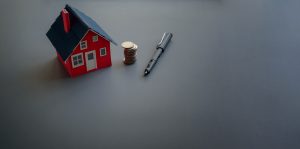
Unequal access to housing is a key driver of the wealth gap in America.
This discrepancy points to a greater problem in American society. While equal opportunity laws exist to help curb explicit racism, implicit racism still runs rampant throughout our systems, and so does its historical legacy. Redlined neighborhoods, held back by a discriminatory practice that was later abolished through the Fair Housing Act, have still not economically recovered to this day. Black potential homeowners still face more red tape than white potential homeowners, even if they have equal or better credit scores.
Housing and access to housing is a huge indicator of financial wellness, and American systemic racism has barred minorities from having equal access to these and other wealth-building opportunities. If we work to curb inequality in our communities, a greater portion of our population could access wealth and opportunities and everyone would benefit from the bolstering of the market.
Why Equal Credit Opportunities Matter for the Economy
As a society, we need to be striving for a more equal distribution of wealth and labor. Unfortunately, America’s rich only keep getting richer, and America’s poor only keep getting poorer. The gap in earnings between America’s most affluent and the rest of the country continue to grow year after year—posing an incredible economic risk. The top 10 percent of the country is earning more than the bottom 90 percent, and they’re not putting that same level of money back into the economy, causing the economy to grow unstable. In fact, the economic concentration of money has returned to Gilded Era-levels of concentrated wealth.
Economic factors, like housing and education, feed into the economic instability. And racial gaps in education show a worrisome economic outlook. Since 1979, only college graduates have seen an increase in median weekly earnings; whereas non-college graduates have seen their median weekly earnings decline. And dropout rates among demographic groups are drastically different. Hispanic students are the most likely to drop out, while white students are the least likely. Similarly, Black people are the least likely to enroll in college and whites are the most likely. Since college graduates are the only bracket to see an increase in wages, both Black people and Hispanics are at a systemic disadvantage.
Hispanic and Black people have a lower average household income than white people and at the same time, they spend more of their income caring for their families. They have less disposable income as groups and less capital to invest in the market. Pair that with lower overall credit scores, and there’s a huge economic need for those in positions of power to legislate systemic equality into existence.
Solutions to Economic Inequality
While economic inequality is a problem for America, it doesn’t have to be. There are systemic solutions we can push for that will help decrease inequality at a local and national scale. The following examples are just a few of the steps we can take toward this goal.
1. Develop infrastructure and basic service provisions:
Risk management strategies should be put into place to help the most impoverished areas when disasters do strike. The poorest of the community shouldn’t be put at the most risk.
2. Establish social assistance and protection:
With the stagnation of wages and the decreased wealth of the bottom 10 percent of Americans, it becomes increasingly necessary to set up a safety net that helps protect the most vulnerable.
3. Develop credit piggybacking programs to help increase people’s access to credit:
A system used by the wealthy to build credit and attain wealth should be accessible to all. At Tradeline Supply Company, LLC, we’ve created such a program. This system allows people to become authorized users on other people’s credit cards in order to get started in the world of credit.
Why And How You Should Advocate for Economic Equality
Economic inequality and credit inequality are harming our local and national economies because not everyone is able to access the same resources.
Some of this comes down to financial education. Education is a major factor in climbing out of the lower class. Since there’s a systemic structure of poverty in America and it’s becoming harder and harder to climb the social ladder, advocating for financial education is a great way to encourage people to make a better life for themselves. One easy way to do this is to share our informative content on credit, tradelines, and personal finance with others to empower them to make educated financial choices and get ahead in life financially.
Another great way to help is to become one of our credit partners. Allowing consumers to become authorized users on your credit cards helps them build credit history and create a better financial future for themselves.
As we all help advocate for more equality in the community, those small changes push us toward a systematic change of the structure of our economy.
Change won’t happen overnight. Systemic racism and poverty have been established over the duration of this country’s existence, but you can be part of the change. And together, we will make a difference in the movement for financial and credit equality.

